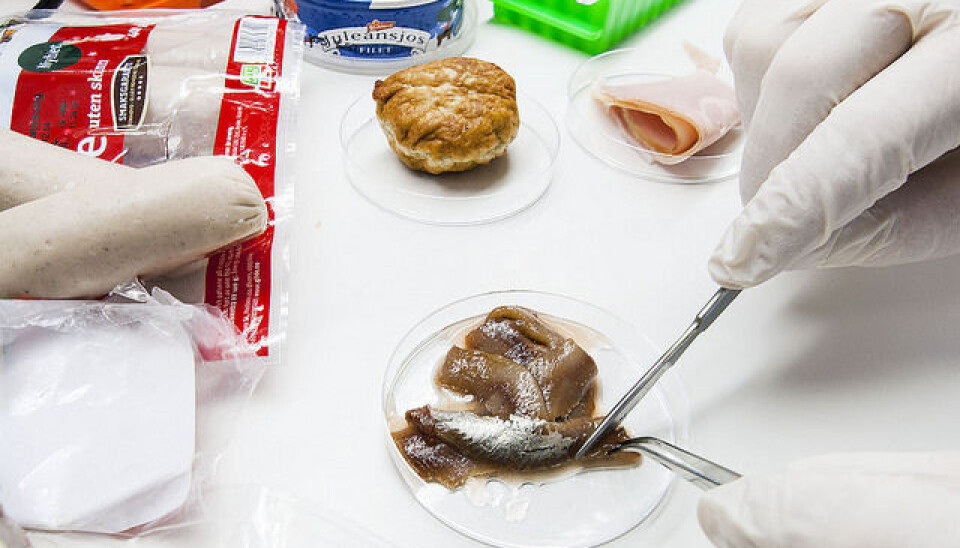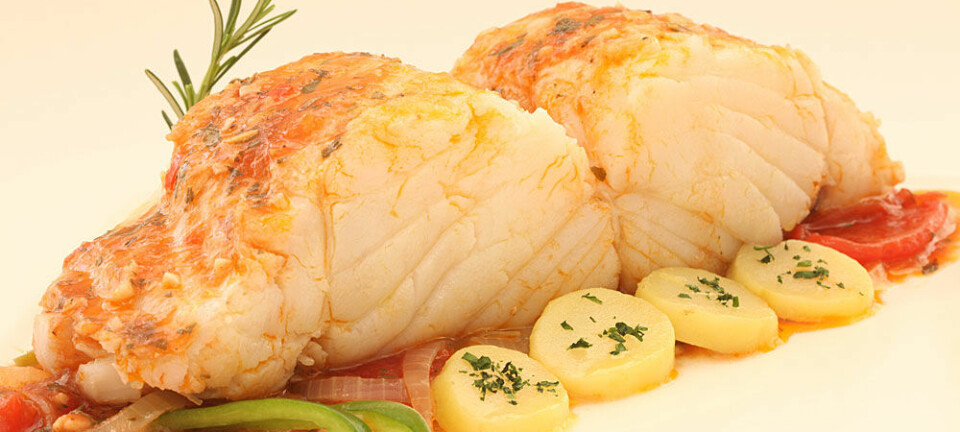An article from Norwegian SciTech News at NTNU

Norwegian Christmas food spills its beans
During Christmas you may begin to wonder if the patties really contain pork, the herring in the tomato sauce really is herring, if the sausages contain beef, or if the Christmas anchovies have anchovies in them. No need to fret, DNA barcoding can confirm the identity of what you’re eating this Christmas.
Denne artikkelen er over ti år gammel og kan inneholde utdatert informasjon.
The NTNU University Museum in Trondheim accepted the challenge and analysed the DNA from ten randomly selected traditional Norwegian Christmas dishes found in grocery stores. When compared with the International DNA barcode reference library the results showed that, overall, the ingredients corresponded to the descriptions on the packaging.
“It’s exciting to see that species identification through DNA can be applied so successfully on precooked food,” says Torbjørn Ekrem, coordinator for the Norwegian Barcode of Life, NorBOL (see fact box).
“DNA is a robust molecule, but can be damaged by heat treatment or acid. However, there are no indications this was an issue for the products we tested,” he said.
Christmas anchovies do not contain anchovies
Staff engineer Erik Boström was responsible for the sampling and analysis of the Christmas sausage, Christmas ham, pressed ham, patties, “sodd”, Christmas anchovies, pickled herring and pickled herring in tomato sauce. The results were not surprising in terms of the expected outcome, with one minor exception: The Christmas anchovies contained sprat, not anchovies.
“A product that is labeled as ‘anchovy’ has traditionally contained sprat in Norway,” says Ekrem.
“I can understand that ‘Christmas sprat’ may not sell as well, but I still think that manufacturers could be more specific about the species they list in their ingredients. Christmas anchovies could list ‘filet of anchovy’ and not sprat, which would have been the correct label,” he said.
Barcoded Norwegian species
Small pieces of DNA can be used in the identification of species (DNA barcoding) in many situations, such as environmental monitoring, research, border control, and food safety. However, for the method to be successfully applied, the primary prerequisite is a good, quality controlled reference library of known species.
The establishment of such a library of Norwegian species is progressing under the supervision of the Norwegian Barcode of Life, NorBOL, which is partially financed by the Research Council of Norway and the Norwegian Biodiversity Information Centre. This includes both species found in Norwegian Christmas food, and others.
---------
Facts:
- The Norwegian Barcode of Life and national research infrastructure, partially financed by Research Council of Norway and the Norwegian Biodiversity Information Centre.
- The network consists of 16 institutions
- The university museums in Bergen, Oslo, Tromsø and Trondheim are the main contributors.
- The project is coordinated by the NTNU University Museum in Trondheim
- The goal is to collect 10 000 barcodes from 20 000 species by 2018
- Forms a part of an international project for the DNA indexing for the world’s species
Translated by: Therese Rørvik Skjølberg
































